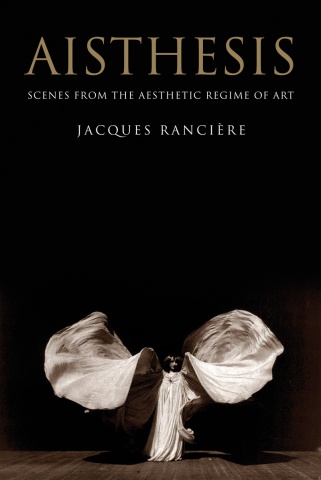Hannah Arendt: Eichmann in Jerusalem: A Report on the Banality of Evil (1963–) [EN, DE, IT, CZ, PL, ES, RU]
Filed under book | Tags: · evil, ideology, nazism, politics, totalitarianism

“Originally appearing as a series of articles in The New Yorker, Hannah Arendt’s authoritative and stunning report on the trial of Nazi leader Adolf Eichmann sparked a flurry of debate upon its publication. This revised edition includes material that came to light after the trial, as well as Arendt’s postscript directly addressing the controversy that arose over her account. A major journalistic triumph by an intellectual of singular influence, Eichmann in Jerusalem is as shocking as it is informative—an unflinching look at one of the most unsettling (and unsettled) issues of the twentieth century.”
Originally appeared as a series of articles in The New Yorker, 1963
Publisher Viking Press, 1963
Revised and Enlarged Edition, 1965
New edition with an Introduction by Amos Elon, Penguin Books, 2006
Eichmann in Jerusalem: A Report on the Banality of Evil (English, 1963/2007, updated on 2021-2-25)
Eichmann in Jerusalem: Ein Bericht von der Banalität des Bösen (German, trans. Brigitte Granzow, 1964/2007, updated on 2021-2-25)
La banalità del male: Eichmann e Gerusalemme (Italian, trans. Piero Bernardini, 1964)
Eichmann v Jeruzalémě: zpráva o banalitě zla (Czech, trans. Martin Palouš, 1995)
Eichman w Jerozolimie: rzecz o banalności zła (Polish, trans. Adam Szostkiewicz, 1998)
Eichmann en Jerusalén: Un estudio sobre la banalidad del mal (Spanish, trans. Carlos Ribalta, 1999/2003, EPUB, updated on 2021-2-25)
Banalnost zla. Eykhman v Ierusalime (Russian, trans. Sergei Kastalsky and Natalia Rudnitskaya, 2008, DJVU)
Hannah Weiner: Code Poems from The International Code of Signals for the Use of All Nations (1982)
Filed under artist publishing, poetry | Tags: · code, communication, poetry

“I am interested in exploring methods of communication that will be understood face to face or at any distance, regardless of language, country or planet or origin, by all sending and receiving.
For three years I have used the international code of signals to make poems and poetry events, because this code makes available and possible the translation of simultaneous equivalents:
- Flashing light (by Morse): abstract visual,
- Sound signaling (by Morse): abstact aural,
- Live semaphore: motion,
- Fixed semaphore: motion,
- Flag hoists: concrete visual,
- Radio: electronic,
- Words (including equivalent translations in seven different languages.
[..] The amount of information available has more than doubled since WW2. In the next ten years it will double again. How do we deal with it?
- Do we use more than the 5% of the brain now in use?
- Do we process quicker?
- Do we decode information more and put it in another form (not language) so that the present brain can handle it?
- Is there a change in the neural circuits of the brain?
[..] At the moment I am interested in exploring methods of communication through space; considering space as space fields or space solids; through great distances of space; through small distances, such as the space between the nucleus and the electrons of an atom; through distances not ordinarily related to the form of communication used. I am interested in doing this so that we may develop methods of communication that will be understood face to face, or at any distance, regardless of language, country, or planet of origin, by all sending and receiving. For me this implies an understanding of four, five, (and six?) dimensional space; of how what can be transmitted through this space; of how these special dimensions relate to different “states of consciousness” and to different neurological patterns (if any).”
Quoted from Weiner’s “Trans-Space Communication” statement (published in July 1969) written to accompany her performances of Code Poems.
Publisher Open Book Publications, Barrytown/New York, 1982
ISBN 0940170035
28 pages
via waskleist
Weiner at EPC Buffalo
Weiner at PennSound
PDF (no OCR)
Comment (0)Jacques Rancière: Aisthesis: Scenes from the Aesthetic Regime of Art (2011/2013)
Filed under book | Tags: · aesthetics, art, art history, art theory, body, cinema, dance, film, life, literature, music, painting, pantomime, philosophy, photography, poetry, politics, representation, sculpture, theatre, theory

Rancière’s magnum opus on the aesthetic.
“Composed in a series of scenes, Aisthesis–Rancière’s definitive statement on the aesthetic–takes its reader from Dresden in 1764 to New York in 1941. Along the way, we view the Belvedere Torso with Winckelmann, accompany Hegel to the museum and Mallarmé to the Folies-Bergère, attend a lecture by Emerson, visit exhibitions in Paris and New York, factories in Berlin, and film sets in Moscow and Hollywood. Rancière uses these sites and events—some famous, others forgotten—to ask what becomes art and what comes of it. He shows how a regime of artistic perception and interpretation was constituted and transformed by erasing the specificities of the different arts, as well as the borders that separated them from ordinary experience. This incisive study provides a history of artistic modernity far removed from the conventional postures of modernism.”
First published as Aisthesis : Scènes du régime esthétique de l’art, Éditions Galilée, 2011
Translated by Zakir Paul
Publisher Verso Books, 2013
ISBN 1781680892, 9781781680896
304 pages
via falsedeity
Reviews: Hal Foster (London Review of Books), Joseph Tanke (Los Angeles Review of Books), Marc Farrant (The New Inquiry), Ali Alizadeh (Sydney Review of Books), Jean-Philippe Deranty (Parrhesia).
Roundtable discussion with Rancière at Columbia (video, 43 min)
Selected interviews and reviews (in French)

